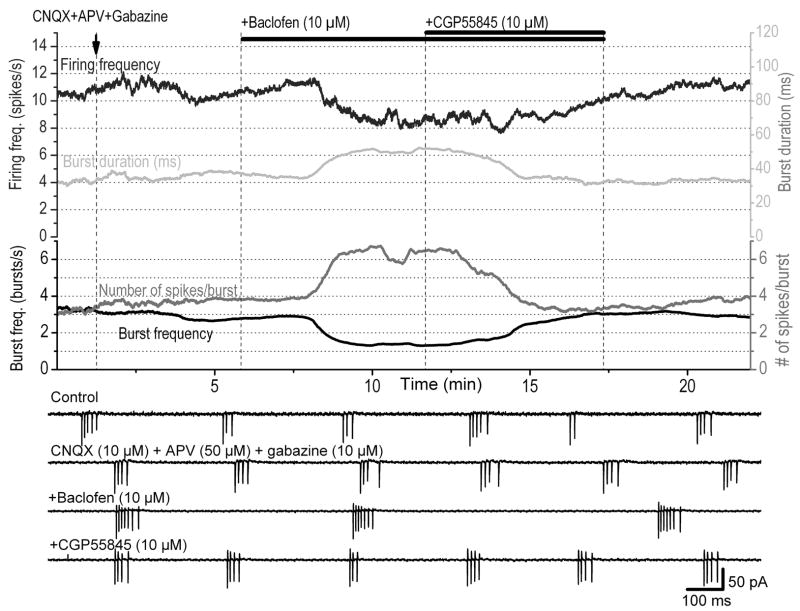FIG. 1.
Effects of baclofen on spontaneous spike bursting in external tufted (ET) cells. Extracellular recordings were made from an ET cell exhibiting bursts of actions potentials that persisted in the presence of blockers of fast synaptic transmission [6-cyano-7-nitroquinoxaline-2,3-dione (CNQX), 10 μM; (±)-2-amino-5- phosphopentanoic acid (APV), 50 μM; gabazine, 10 μM]. The burst parameters are presented by different colors in the graphs with corresponding scales. Baclofen reduced the frequency of bursts and the firing frequency but it increased the burst duration and the number of spikes/burst. These effects were reversed after addition of the μ -aminobutyric type B receptor (GABAB-R) blocker CGP55845 to the bath (shown by the double bars above). The traces were smoothed by adjacent averaging from 30 consecutive data points. The timescale is common for all graphs. Bottom: 4 representative traces of extracellular recordings in each condition.

